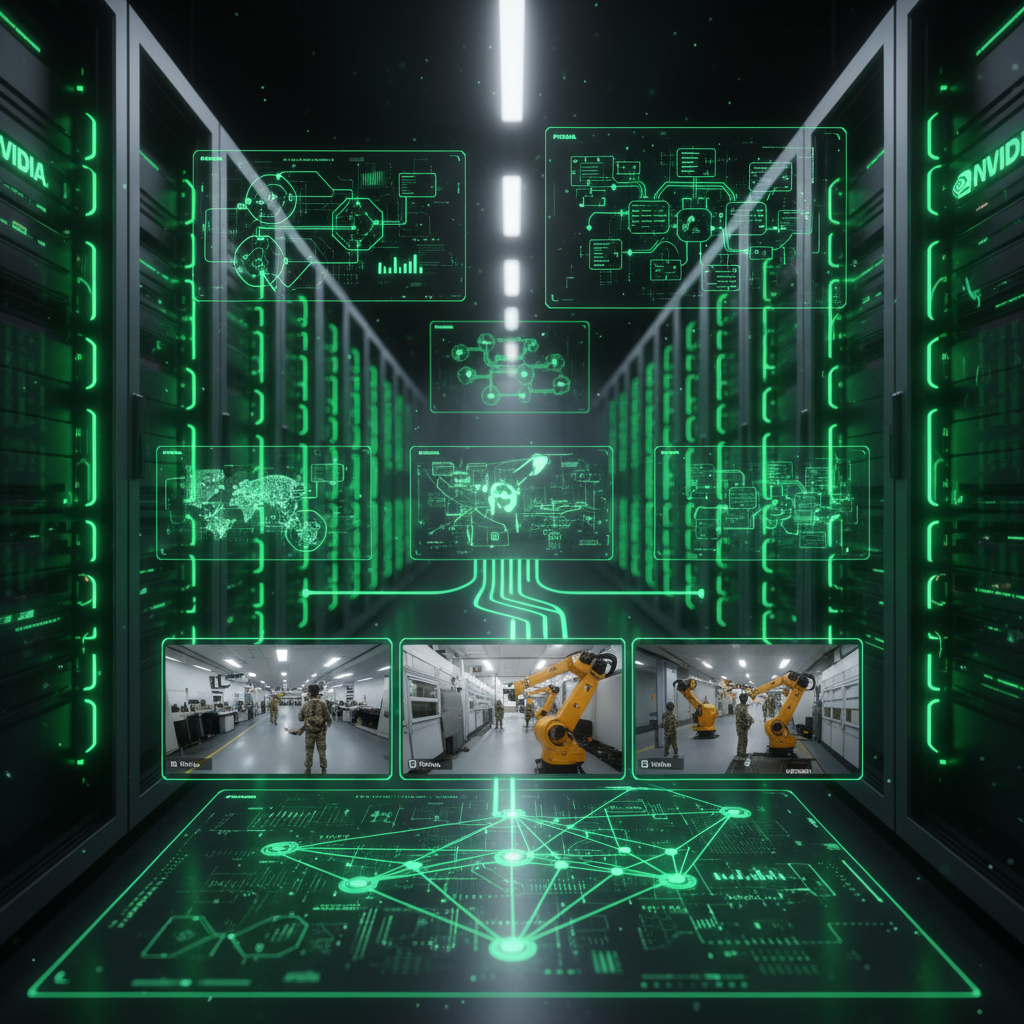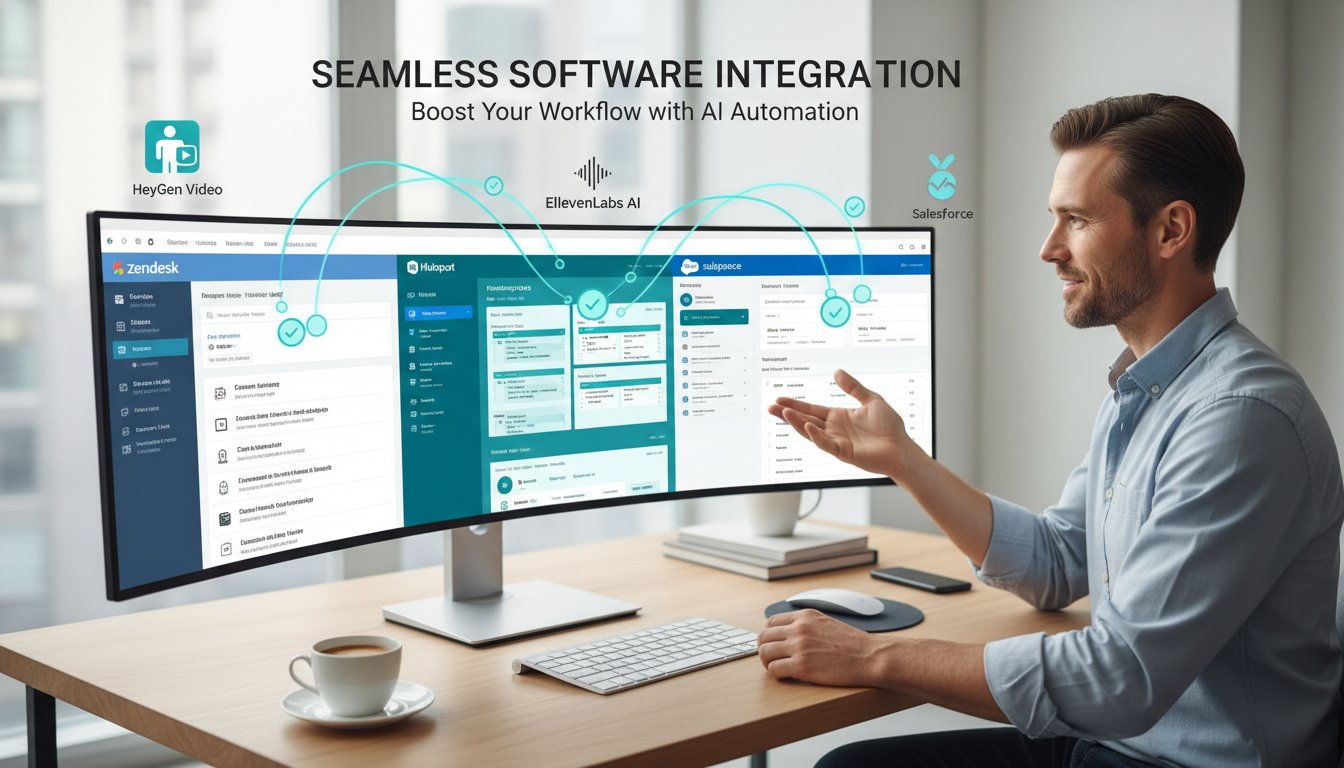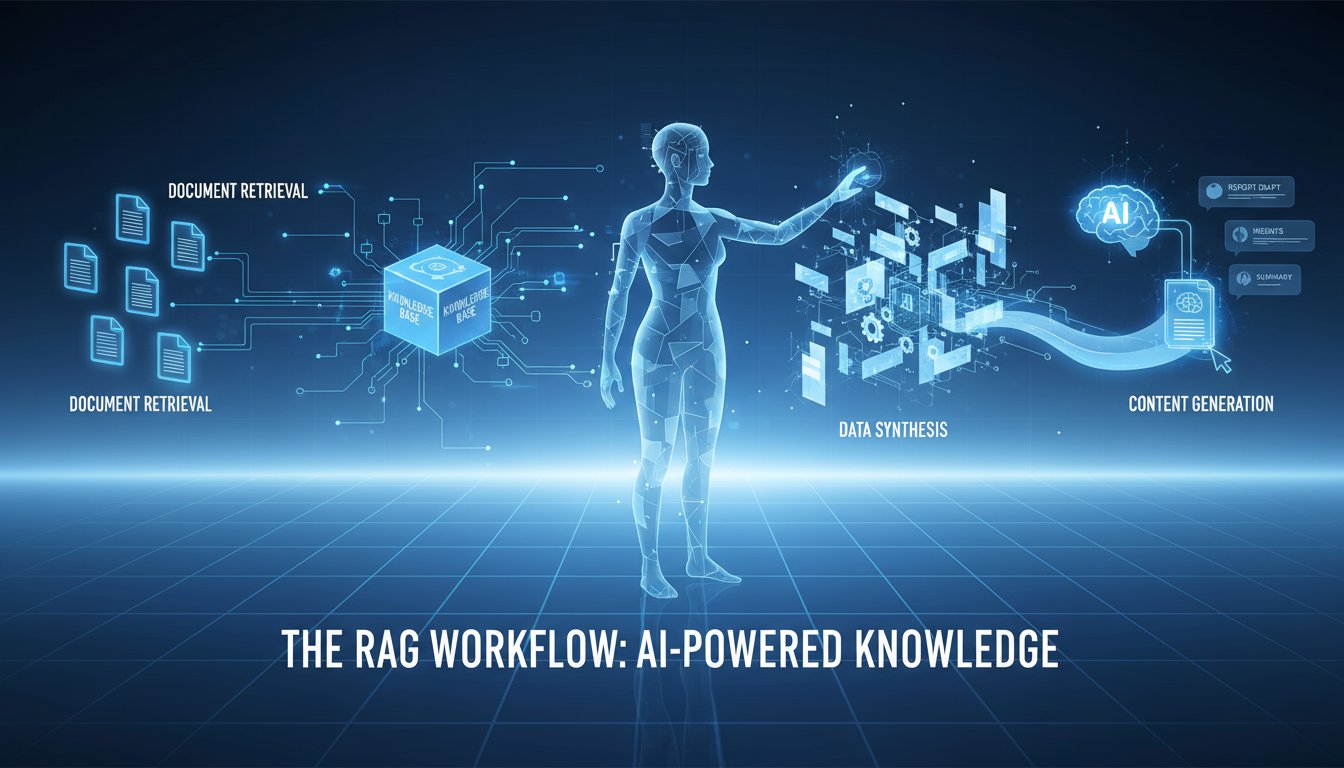The enterprise video analytics landscape has reached a pivotal moment. While organizations generate terabytes of video data daily—from security footage to training materials, manufacturing processes to customer interactions—most of this valuable content remains locked away, inaccessible to business intelligence systems. Traditional video analytics tools can detect objects and track movements, but they struggle to connect visual insights with broader enterprise knowledge, leaving critical business intelligence untapped.
NVIDIA’s latest AI Blueprints for video analytics integration with Retrieval-Augmented Generation (RAG) systems changes this paradigm entirely. By combining video understanding with contextual enterprise knowledge retrieval, organizations can now extract actionable insights from video content at unprecedented scale and accuracy. This isn’t just another AI tool—it’s a fundamental shift toward truly intelligent video analytics that understands context, provides citations, and delivers enterprise-grade reliability.
For enterprise AI teams, this represents the missing piece in the multimodal AI puzzle. While text-based RAG systems have proven their value, the integration of video analytics with knowledge retrieval opens entirely new use cases: construction sites that automatically flag safety violations while referencing current OSHA guidelines, manufacturing floors that detect equipment anomalies and cross-reference maintenance protocols, or training programs that provide real-time nutritional advice backed by authoritative health databases.
This comprehensive guide will walk you through the technical architecture, implementation strategies, and real-world applications of NVIDIA’s video analytics RAG integration. You’ll discover how to deploy these systems at enterprise scale, understand the performance implications, and learn from actual implementation examples that are already transforming how organizations extract value from their video assets.
Understanding NVIDIA AI Blueprints Architecture for Video Analytics
NVIDIA AI Blueprints represent a paradigm shift from monolithic AI solutions to modular, composable workflows designed for enterprise scale. The Video Search and Summarization (VSS) Blueprint, when integrated with RAG capabilities, creates a powerful multimodal intelligence system that processes video content while simultaneously accessing enterprise knowledge bases.
The architectural foundation consists of three core components working in harmony. The Video Understanding Pipeline extracts captions, metadata, and visual insights from video streams using advanced Vision Language Models (VLMs). The RAG Knowledge Layer connects to external enterprise documents, databases, and knowledge repositories through well-defined API endpoints. The Integration Framework orchestrates communication between these systems, enabling seamless data flow and maintaining enterprise security standards.
Technical Implementation Architecture
The VSS Blueprint operates as an independent microservice, processing video streams to extract meaningful captions and metadata. This extracted information is then indexed and made searchable, creating a structured representation of video content. When integrated with RAG systems, this architecture enables sophisticated query processing that combines visual understanding with external knowledge retrieval.
The integration happens through tagged content sections marked with <e>...</e> tags within video summaries. These tags signal the RAG system to retrieve relevant external information, which is then fused into enriched textual summaries. This approach maintains modularity while enabling powerful cross-modal reasoning capabilities.
Performance metrics reveal the efficiency of this architecture. RAG integration adds approximately 10% latency to chat Q&A pipelines and only 1% to video summarization tasks. This minimal overhead makes the system viable for real-time applications while delivering significantly enhanced insights.
Deployment and Configuration
Implementing the integrated system requires careful consideration of infrastructure and configuration. The deployment process begins with setting up the VSS Blueprint using Docker containers, followed by configuring the RAG Blueprint as a separate microservice. The integration involves editing Dockerfiles to incorporate NVIDIA’s context-aware RAG repository and establishing API endpoints for inter-service communication.
# Example Docker configuration for VSS-RAG integration
FROM nvidia/cuda:11.8-runtime-ubuntu20.04
COPY --from=rag-blueprint /app/rag-service /app/
EXPOSE 8080 8081
CMD ["python", "integrated_service.py"]
The configuration process includes setting up secure API endpoints, configuring knowledge base connections, and establishing proper authentication mechanisms. Organizations must also consider data governance requirements, ensuring that video content and retrieved knowledge comply with enterprise security policies.
Enterprise Use Cases and Real-World Applications
The combination of video analytics and RAG opens unprecedented possibilities for enterprise applications. In construction and manufacturing, safety monitoring systems can now detect potential hazards in real-time while automatically referencing current safety protocols and regulations. This creates actionable alerts that not only identify problems but also provide specific guidance for resolution.
Healthcare and Training Applications
Healthcare organizations are leveraging this technology for medical training and patient care. Video-based training sessions can now be automatically analyzed to extract key medical procedures, cross-referenced with current medical guidelines and best practices. For example, a surgical training video can be processed to identify specific techniques while simultaneously retrieving relevant research papers, clinical guidelines, and safety protocols.
One particularly compelling use case involves nutritional counseling. The system can analyze meal preparation videos, identify ingredients and cooking methods, then retrieve nutritional information from authoritative databases like USDA nutritional guidelines. This creates comprehensive health advice that combines visual analysis with evidence-based nutritional science.
Manufacturing and Quality Control
Manufacturing environments benefit significantly from this integrated approach. Production line videos can be analyzed for quality control issues while automatically accessing maintenance manuals, quality standards, and troubleshooting guides. When an anomaly is detected, the system doesn’t just flag the issue—it provides specific remediation steps based on manufacturer guidelines and historical maintenance data.
The system’s ability to process live video streams makes it particularly valuable for continuous monitoring applications. Equipment performance can be evaluated in real-time, with maintenance recommendations generated based on both visual analysis and comprehensive equipment documentation.
Sports Analytics and Performance Optimization
Sports organizations are using this technology to revolutionize performance analysis. Game footage can be processed to identify specific plays and strategies, then cross-referenced with statistical databases, training protocols, and performance metrics. This creates comprehensive performance insights that combine visual analysis with quantitative data analysis.
Coaches can receive detailed breakdowns of player performance, complete with citations to relevant training methodologies and performance research. This evidence-based approach to sports analytics provides a significant competitive advantage while ensuring recommendations are grounded in proven methodologies.
Performance Optimization and Scaling Strategies
Implementing video analytics RAG systems at enterprise scale requires careful attention to performance optimization and infrastructure scaling. The modular architecture of NVIDIA AI Blueprints enables organizations to scale individual components based on specific workload requirements.
Infrastructure Considerations
Successful deployment requires robust computing infrastructure capable of handling both video processing and knowledge retrieval workloads. NVIDIA recommends GPU-accelerated infrastructure for video processing components, while RAG systems can leverage either GPU or CPU resources depending on the complexity of knowledge retrieval requirements.
Network architecture plays a crucial role in system performance. The integration between VSS and RAG components requires low-latency communication, making network optimization essential for real-time applications. Organizations should consider dedicated network paths for inter-service communication and implement proper load balancing to handle varying workload demands.
Storage requirements vary significantly based on video volume and knowledge base size. Video content requires high-throughput storage for processing, while knowledge bases benefit from fast random access capabilities. Implementing tiered storage strategies can optimize both performance and cost.
Monitoring and Evaluation
Enterprise deployment requires comprehensive monitoring and evaluation frameworks. Organizations need to track both video processing accuracy and knowledge retrieval relevance to ensure system reliability. This includes monitoring for concept drift in video content, knowledge base currency, and overall system performance metrics.
Implementing proper evaluation metrics enables continuous improvement of system performance. Organizations should establish baselines for video understanding accuracy, knowledge retrieval precision, and end-to-end response quality. Regular evaluation cycles ensure the system maintains high performance as content and requirements evolve.
Security and Governance Considerations
Enterprise video analytics systems must address stringent security and governance requirements. Video content often contains sensitive information, from proprietary manufacturing processes to personal employee data. The integration with knowledge bases adds additional complexity, requiring careful attention to data access controls and audit trails.
Data Protection and Privacy
Implementing proper data protection requires a multi-layered approach. Video content should be encrypted both at rest and in transit, with access controls based on organizational roles and responsibilities. The integration with RAG systems must maintain these security standards while enabling efficient knowledge retrieval.
Privacy considerations are particularly important when processing video content containing individuals. Organizations must implement proper anonymization techniques and ensure compliance with relevant privacy regulations. The system should support configurable privacy controls that can be adjusted based on content type and organizational requirements.
Compliance and Audit Requirements
Regulated industries require comprehensive audit trails for AI system decisions. The integrated video analytics RAG system must log all processing activities, knowledge retrieval operations, and system outputs. This creates a complete audit trail that supports regulatory compliance and enables forensic analysis when needed.
Implementing proper governance frameworks ensures responsible AI deployment. Organizations should establish clear policies for video content processing, knowledge base access, and system output validation. Regular governance reviews help maintain compliance and identify potential improvement opportunities.
Future Implications and Strategic Considerations
The integration of video analytics with RAG systems represents just the beginning of a broader transformation in enterprise AI capabilities. As multimodal AI technologies continue to evolve, organizations that establish strong foundations now will be well-positioned to leverage future advancements.
Technology Evolution and Roadmap
NVIDIA’s roadmap indicates continued investment in multimodal AI capabilities, with future versions expected to support additional content types including audio analysis, document processing, and real-time collaboration features. Organizations should consider these future capabilities when designing current implementations to ensure smooth upgrade paths.
The trend toward agentic AI suggests that future systems will provide even more autonomous operation, with AI agents capable of making complex decisions based on multimodal analysis. This evolution will require organizations to develop new governance frameworks and operational procedures to manage increasingly sophisticated AI capabilities.
Competitive Advantage and Business Value
Organizations implementing these advanced video analytics capabilities gain significant competitive advantages through improved operational efficiency, enhanced decision-making capabilities, and new insight generation possibilities. The ability to extract actionable intelligence from previously untapped video assets creates new opportunities for business optimization and innovation.
The return on investment for these systems often exceeds expectations due to their broad applicability across organizational functions. From security and safety to training and quality control, the integrated video analytics RAG approach delivers value across multiple business areas simultaneously.
NVIDIA’s AI Blueprints for video analytics RAG integration represents a transformative advancement in enterprise AI capabilities. By combining sophisticated video understanding with contextual knowledge retrieval, organizations can unlock the value hidden in their video assets while maintaining enterprise-grade security and performance standards. The modular architecture enables flexible deployment strategies, while proven performance metrics demonstrate real-world viability.
For enterprise AI teams ready to move beyond traditional analytics, this technology provides a clear path forward. The comprehensive implementation guide, real-world use cases, and performance optimization strategies outlined here provide the foundation for successful deployment. As multimodal AI continues to evolve, organizations that establish these capabilities now will be well-positioned to leverage future advancements and maintain competitive advantages in an increasingly AI-driven business landscape.
Ready to transform your organization’s video analytics capabilities? Start by exploring NVIDIA’s AI Blueprints documentation and consider how video analytics RAG integration could enhance your specific use cases. The technology is proven, the implementation path is clear, and the competitive advantages are significant—the question isn’t whether to implement these capabilities, but how quickly you can get started.




